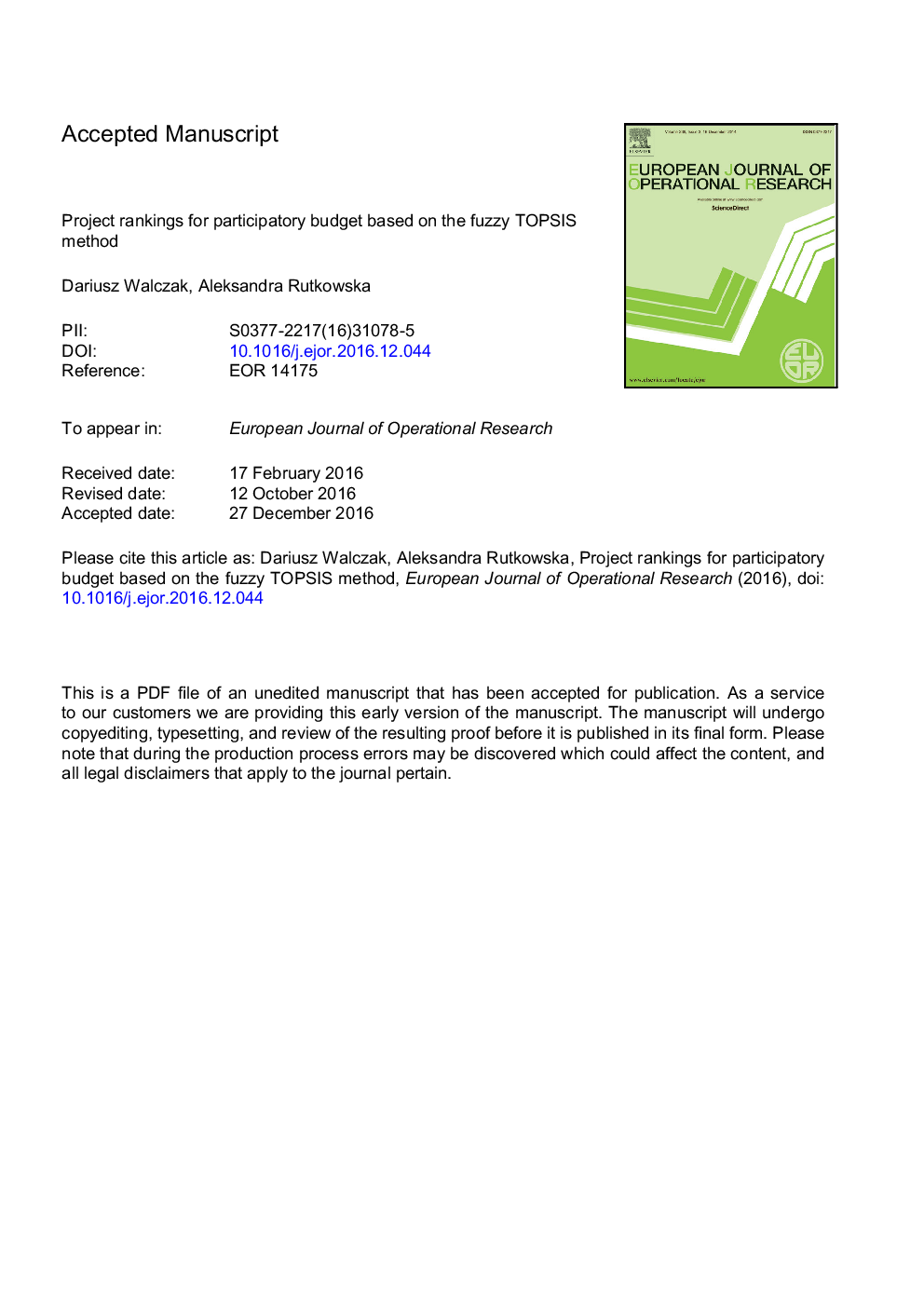| Article ID | Journal | Published Year | Pages | File Type |
|---|---|---|---|---|
| 4959861 | European Journal of Operational Research | 2017 | 31 Pages |
Abstract
In this study, a fuzzy technique is proposed for order preference based on the similarity to an ideal solution for the personalized ranking of projects in a participatory budget (PB). A PB is a group decision-making process where citizens distribute public resources among a set of city investment proposals. The dynamic growth in the popularity of PB during the last 10 years has been due to a significant increase in the number of projects submitted and the demonstrable weakness of the traditional majority vote. The rationality of decision-makers is restricted by the large number of possible options from which voters can choose only a few within a limited amount of time, and thus there is no opportunity to review all of the projects. Appropriate decision support tools can assist with the selection of the best outcome and help to address the growth of PB processes. The ranking of PB projects is a specific problem because multi-criteria comparisons are based on non-quantitative criteria, i.e., nominal and fuzzy criteria. The “Technique for Order Preference by Similarity to Ideal Solution” (TOPSIS) method aims to minimize the distance to the ideal alternative while maximizing the distance to the worst. In a fuzzy extension of TOPSIS, the ratings of alternatives and the weights of the criteria are fuzzy numbers or linguistic variables. The major modification required to the TOPSIS method for PB is that the perfect objective solution does not exists among the maximum and minimum values for the criteria. Thus, the subjective choice is the ideal solution for the decision maker and the negative ideal solution is the most dissimilar solution. This study describes the application of fuzzy TOPSIS with a modification for PB based on an empirical example from a PoznaÅ PB project (Poland).
Related Topics
Physical Sciences and Engineering
Computer Science
Computer Science (General)
Authors
Dariusz Walczak, Aleksandra Rutkowska,
